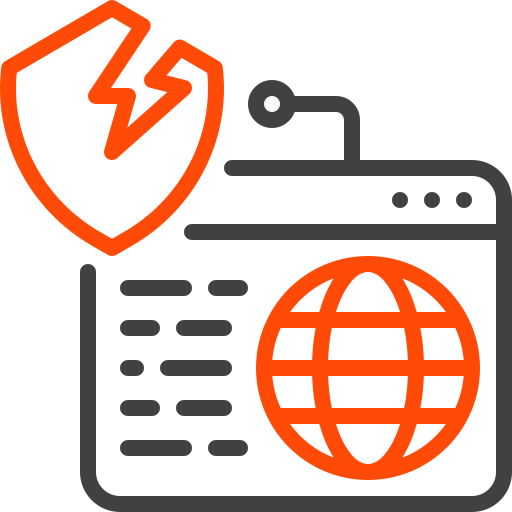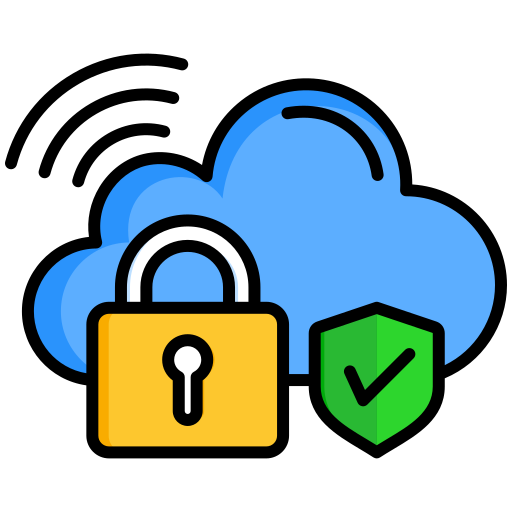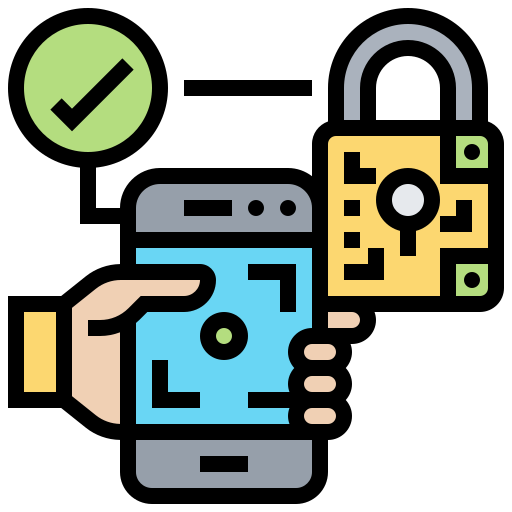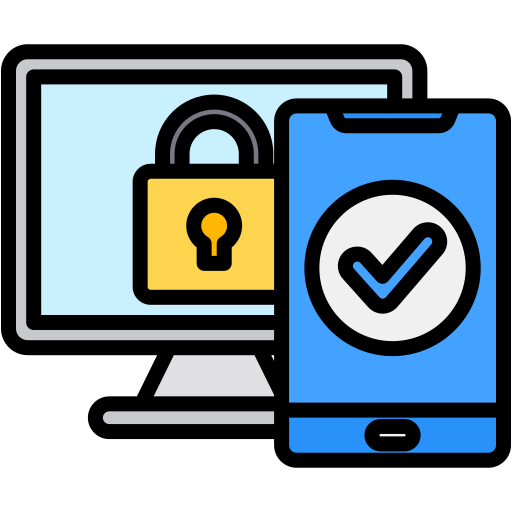Thank You For Getting In Touch!
Your enquiry has been submitted successfully.
We will respond to you shortly.
Oops, Something Went Wrong!
Please try again later.
Services
Offensive Security Testing
Strengthening Your Defenses Before an Attack Happens
At Cyber 365, we believe in proactively identifying and mitigating vulnerabilities before attackers can exploit them. Our Offensive Security Testing is an advanced approach to cybersecurity, designed to simulate real-world cyberattacks on your systems and networks. This rigorous testing identifies weaknesses in your infrastructure and applications, ensuring your business is better prepared to defend against potential threats.
What is Offensive Security Testing?
Offensive Security Testing, often known as ethical hacking, involves authorized simulated attacks on your digital systems by security professionals. These simulated attacks mimic the tactics, techniques, and procedures (TTPs) used by cybercriminals. The goal is to identify vulnerabilities, misconfigurations, and weak points in your systems that could be exploited to gain unauthorized access or disrupt your business operations.
Unlike traditional security measures, which may only assess systems for known vulnerabilities, offensive security testing pushes the boundaries to uncover hidden risks and vulnerabilities in your infrastructure, network, and applications.
Types of Offensive Security Testing

Penetration Testing (Pen Testing)
Penetration testing involves simulating attacks to find vulnerabilities in your network, systems, and applications. Our ethical hackers attempt to exploit weaknesses to determine the potential impact of a real-world breach. Pen testing helps prioritize security fixes by showing the most critical risks to your business.

Red Teaming
A Red Team simulates a full-scale attack, testing not only your technical security but also your internal processes, response plans, and overall defense capabilities. Red Teaming involves coordinated efforts to mimic sophisticated and persistent adversaries in a realistic attack scenario.

Vulnerability Assessment
This service involves identifying and evaluating security weaknesses within your systems. A vulnerability assessment is typically a more systematic scan of known vulnerabilities in your environment, helping to ensure compliance and reduce exposure to threats.

Social Engineering Testing
Social engineering focuses on exploiting human behavior rather than technological weaknesses. This type of testing examines how susceptible employees are to phishing attacks, pretexting, or baiting attempts, assessing how well staff can detect and avoid these social manipulation tactics.

Web Application Security Testing
Specialized testing of web applications to detect common vulnerabilities such as SQL injection, cross-site scripting (XSS), and cross-site request forgery (CSRF). This ensures that your web applications are robust and resistant to exploitation.
Advantages of Offensive Security Testing
Proactive Vulnerability Identification
By conducting offensive security testing, you can identify vulnerabilities before cybercriminals do. This proactive approach helps you stay one step ahead of potential threats and minimize the chances of a successful attack.
Real-World Attack Simulation
Offensive security testing mirrors real-life cyberattacks, providing a more accurate view of your vulnerabilities compared to traditional assessments. This helps you understand how attackers could infiltrate your systems, giving you deeper insights into your security posture.
Risk Mitigation
Discovering and addressing vulnerabilities early on prevents costly data breaches, fines, and reputational damage. It enables your organization to fix weaknesses before they become catastrophic threats.
Improved Incident Response
By testing your organization's ability to detect and respond to attacks, you improve your overall incident response plan, making your team more prepared for a real cyberattack.
Enhanced Compliance
Many regulatory frameworks, such as GDPR, HIPAA, and PCI-DSS, require vulnerability testing and risk assessments. Offensive security testing helps ensure that your business meets the necessary compliance standards, reducing the risk of penalties.
Common Myths About Offensive Security Testing
Offensive security testing is illegal.
Offensive security testing is completely legal when conducted with the proper authorization. At Cyber 365, we only perform testing with the explicit consent of our clients, ensuring that the activities are within the boundaries of the law.
It’s only for large businesses.
Cyberattacks target businesses of all sizes. Offensive security testing is valuable for businesses of all scales, helping to protect critical data and infrastructure regardless of your company’s size.
Penetration tests are only for network vulnerabilities.
While penetration testing does focus on network vulnerabilities, it also includes application testing, physical security, and social engineering tactics, ensuring a comprehensive assessment of your entire security posture.
Our system is too secure to be hacked.
No system is immune to attacks. Cybercriminals continually evolve their methods, and an assumption of invulnerability could leave your business exposed. Offensive security testing helps uncover even the smallest vulnerabilities.
What Makes Us Different
Why Choose Cyber 365 for Offensive Security Testing?

Expert Knowledge
Our team of certified ethical hackers brings years of experience in testing a wide range of systems and networks, ensuring thorough testing and insightful recommendations.

Tailored Approach
We understand that every business has unique security needs. Our offensive security testing is customized to focus on the specific risks and challenges relevant to your business.

Actionable Insights
Beyond just identifying vulnerabilities, we provide actionable steps and solutions to strengthen your security and prevent future attacks.

End-to-End Support
From planning and testing to remediation and ongoing monitoring, Cyber 365 supports your organization at every stage to ensure your security is continuously evolving.

Frequently Asked Questions (FAQs)
Still confused about our process?
Find out how often to conduct security tests, what happens after an assessment, how we ensure smooth operations, and why Cyber 365 stands out.
It’s recommended to conduct penetration testing at least once a year or whenever there are significant changes to your network, infrastructure, or applications. However, businesses with higher risk exposure may benefit from more frequent testing.
After testing, we provide you with a detailed report that includes the vulnerabilities found, the risks they pose, and prioritized recommendations for mitigating them. We also offer support to help implement these fixes.
Our team works closely with you to minimize disruptions. We conduct testing during off-peak hours and follow a detailed plan that ensures critical systems remain operational throughout the process.
At Cyber 365, we combine years of experience with the latest testing methodologies to provide in-depth, thorough security assessments. We also focus on working collaboratively with your team to ensure actionable results and long-term security improvements.
Managed VAPT Services
Managed VAPT Services: Continuous Security for Your Business
In the ever-evolving world of cybersecurity, maintaining a robust defense against vulnerabilities and threats is crucial. At Cyber 365, we offer Managed Vulnerability Assessment and Penetration Testing (VAPT) Services to ensure your systems, networks, and applications remain secure against the latest cyber threats. Our Managed VAPT approach delivers ongoing, proactive security measures that allow your organization to identify, address, and prevent potential vulnerabilities before they can be exploited.
What is Managed VAPT?
Managed VAPT (Vulnerability Assessment and Penetration Testing) is a comprehensive, ongoing security service designed to assess and improve the security of your digital infrastructure. Our Managed VAPT Services take these two essential tests and integrate them into a continuous, managed process, allowing for regular assessments, timely identification of vulnerabilities, and immediate remediation actions to ensure your security posture is always strong. It combines two core services,
Vulnerability Assessment (VA) : This involves a systematic scan of your environment to identify known vulnerabilities in your systems, software, and networks.
Penetration Testing (PT) : This simulates real-world attacks using OWASP Top 10 Framework, attempting to exploit identified vulnerabilities to understand how an adversary might gain access or cause damage to your organization.
Types of Managed VAPT Services

Network Vulnerability Assessment and Penetration Testing
Our team conducts thorough network assessments to identify weaknesses in your perimeter defenses, internal network architecture, and network devices. We simulate real-world attack techniques to identify possible entry points for cybercriminals.

Web Application Vulnerability Assessment and Penetration Testing
We evaluate the security of your web applications, detecting common vulnerabilities like SQL injection, cross-site scripting (XSS), and insecure APIs. Penetration testing goes deeper, simulating attacks on your web infrastructure to understand the potential damage from a real breach.

Cloud Security Assessment
As businesses continue to embrace cloud technologies, security gaps in cloud infrastructure can create significant risks. Our cloud security assessments focus on identifying misconfigurations, weak access controls, and other vulnerabilities that could expose your data to unauthorized access.

Mobile Application Security Testing
With mobile applications becoming an integral part of business, ensuring their security is critical. Our testing includes assessing mobile apps for vulnerabilities like insecure data storage, poor encryption practices, and weak authentication mechanisms.

Compliance-Based VAPT
For businesses that need to meet regulatory standards, such as GDPR, PCI-DSS, or HIPAA, we offer VAPT services tailored to meet specific compliance requirements. We ensure that your organization adheres to these industry standards and avoid costly penalties.
Advantages of Managed VAPT Services
Continuous Security
Unlike one-time assessments, our Managed VAPT Services provide ongoing testing and monitoring, allowing us to identify new vulnerabilities as they arise and ensure your systems are always secure.
Proactive Risk Management
Regular vulnerability assessments and penetration tests enable you to stay ahead of potential threats. We identify risks before they can be exploited, helping to protect your business from costly security breaches.
Comprehensive Coverage
Our managed services encompass all aspects of your IT infrastructure, from networks and applications to cloud environments and mobile apps. This provides a holistic view of your security posture, ensuring all areas are thoroughly assessed.
Expert Guidance and Remediation
In addition to identifying vulnerabilities, our expert team provides actionable recommendations and supports you through the remediation process, helping to fix weaknesses quickly and effectively.
Improved Incident Response
With regular testing, your security team becomes more adept at detecting and responding to cyberattacks, enhancing your organization’s overall incident response capabilities.
Cost-Effective Security
By adopting a Managed VAPT approach, businesses can significantly reduce the likelihood of costly data breaches, downtime, and reputational damage, all of which can be far more expensive than proactive vulnerability management.
Common Myths About Managed VAPT Services
Managed VAPT Services are only necessary for large enterprises.
Cyberattacks target businesses of all sizes. Managed VAPT Services are essential for any organization looking to protect sensitive data, safeguard customer trust, and ensure business continuity, no matter its size.
Once vulnerabilities are fixed, no further testing is needed.
New vulnerabilities constantly emerge, and existing security measures can degrade over time. Ongoing VAPT is essential to adapt to the evolving cyber threat landscape and ensure continuous protection.
VAPT services are expensive and time-consuming.
Managed VAPT services are cost-effective in comparison to the potential financial and reputational losses from a cyberattack. Additionally, with our streamlined, efficient process, we minimize disruptions while ensuring comprehensive coverage.
Managed VAPT is only for detecting technical vulnerabilities.
VAPT includes testing for human and process-related weaknesses, such as social engineering risks. Our holistic approach covers both technical and non-technical vulnerabilities.
What Makes Us Different
Why Choose Cyber 365 for Managed VAPT Services?

Expertise & Experience
Our team of certified ethical hackers and cybersecurity experts brings years of hands-on experience in assessing and securing a wide range of IT environments.

Tailored Solutions
We understand that each business has unique security needs, and we customize our Managed VAPT services to focus on your specific risks and challenges.
.png)
Actionable Insights
Beyond identifying vulnerabilities, we provide practical, easy-to-understand recommendations that empower your team to implement effective security improvements.
.png)
Ongoing Support
With our managed services, you’re not just receiving testing—you’re getting continuous support and guidance to strengthen your defenses and maintain a proactive security posture.

Frequently Asked Questions (FAQs)
Still confused about our process?
Find out how often to conduct security tests, what happens after an assessment, how we ensure smooth operations, and why Cyber 365 stands out.
Managed VAPT is an ongoing service that continually assesses your environment for vulnerabilities, providing regular testing, reporting, and remediation. Traditional one-time testing is often done only as a one-off activity.
The frequency of testing depends on your business needs and risk profile. Typically, we recommend quarterly assessments, but we can tailor the schedule to your specific requirements and industry needs.
Our ethical hackers take all necessary precautions to ensure the safety of your systems. Testing is conducted during low-traffic periods, and any potential disruptions are managed carefully to minimize risk.
You will receive a detailed report outlining discovered vulnerabilities, risk levels, and prioritized remediation steps, usually within 5–10 business days after testing completion.
After identifying vulnerabilities, our team works closely with you to provide detailed recommendations and help remediate any issues. We also offer post-remediation testing to verify that the fixes have been applied effectively.
Red & Blue Team Assessments
Enhancing Cyber Resilience with Red & Blue Team Assessments
Cyber threats are evolving rapidly, making it essential for organizations to test their security measures proactively. At Cyber 365, our Red & Blue Team Assessments help businesses identify vulnerabilities, improve defense mechanisms, and ensure a robust cybersecurity posture.
What is a Red & Blue Team Assessment?
A Red & Blue Team Assessment is a cybersecurity exercise that simulates real-world attack scenarios to test an organization’s security defenses. It involves two teams:
Red Team : Ethical hackers who mimic adversaries to exploit vulnerabilities.
Blue Team : Security professionals who detect, prevent, and respond to attacks.
By conducting this exercise, organizations can assess their ability to defend against cyber threats effectively.
Types of Red & Blue Team Assessments

Full-Scope Attack Simulation
Simulates advanced cyberattacks by analyzing network security, applications, and employee awareness. This test evaluates how well an organization detects, responds to, and recovers from security breaches, mimicking real-world threat scenarios.

Physical Security Assessment
Examines access control, surveillance, and on-site security protocols. Identifies risks such as unauthorized entry, tailgating, and weaknesses in physical security to prevent breaches that could compromise critical systems.

Social Engineering Assessment
Evaluates employee vulnerability to deception-based attacks like phishing, vishing, and baiting. Simulating real-world social engineering tactics, this test strengthens security awareness and mitigates human-based security risks.

Cloud Security Assessment
Detects misconfigurations, weak access controls, and security loopholes in cloud environments. Ensures compliance with industry standards and strengthens cloud infrastructure against unauthorized access and cyber threats.

Endpoint Security Assessment
Analyzes the security of workstations, mobile devices, and IoT endpoints. Assesses the effectiveness of antivirus, EDR solutions, and patch management to safeguard against malware, ransomware, and exploitation attempts.
Advantages of Red & Blue Team Assessments
Identifies Security Gaps
Detects vulnerabilities before attackers exploit them, allowing proactive mitigation by strengthening defenses and closing security loopholes.
Enhances Threat Detection & Response
Improves monitoring capabilities, enabling organizations to detect cyber threats faster and respond effectively before they escalate.
Improves Incident Handling
Helps refine security response strategies, minimizing the impact of security breaches and reducing downtime during recovery efforts.
Boosts Compliance & Security Standards
Ensures adherence to global regulations like ISO 27001, GDPR, and NIST by validating security measures and addressing compliance gaps.
Mitigates Financial & Reputational Risks
Prevents data breaches and cyberattacks that could lead to financial losses, operational disruptions, and reputational damage.
Provides Real-World Cyber Threat Insights
Simulates attack scenarios to help organizations understand adversarial tactics, improving cybersecurity readiness and resilience.
Common Myths About Red & Blue Teaming
We are too small to be attacked.
Many small businesses believe they are not a target for cybercriminals, but in reality, attackers often target smaller organizations due to their weaker security measures. No business is too small to be at risk.
Penetration testing alone is enough.
While penetration testing is valuable, it focuses mainly on specific vulnerabilities. Red & Blue Team Assessments provide a more comprehensive approach by simulating full-scale cyberattacks, covering a wider range of security threats beyond just penetration testing.
Our security tools will catch everything.
Automated security tools play a crucial role in cybersecurity, but they cannot detect every advanced or evolving threat. Human intelligence, combined with Red & Blue Team exercises, is essential to identifying sophisticated attack patterns and vulnerabilities.
It’s only for IT teams.
Cybersecurity is not just an IT department’s responsibility. Effective security requires collaboration across all departments, including HR, finance, and executive leadership, ensuring that every employee understands and follows cybersecurity best practices.
What Makes Us Different
Why Choose Cyber 365 for Managed Red & Blue Team Assessments?

Expert Cybersecurity Professionals
We tailor assessments to match your organization's specific threats, industry standards, and business objectives.

Customized Security Strategies
We understand that each business has unique security needs, and we customize our Managed VAPT services to focus on your specific risks and challenges.

Continuous Threat Monitoring
Our proactive approach includes ongoing threat analysis, ensuring your security posture is always up to date.
.png)
Compliance & Regulatory Support
We help businesses meet cybersecurity compliance requirements, including ISO 27001, GDPR, and NIST frameworks. ✔ Realistic Attack Simulations: Our Red & Blue Team exercises

Frequently Asked Questions (FAQs)
Still confused about our process?
Find out how often to conduct security tests, what happens after an assessment, how we ensure smooth operations, and why Cyber 365 stands out.
It is recommended to perform assessments at least once a year or whenever major infrastructure changes occur. Regular testing ensures that new vulnerabilities are identified, and security defenses remain effective.
While organizations can attempt internal assessments, external cybersecurity professionals offer a higher level of expertise. They provide unbiased evaluations, leverage real-world attack tactics, and identify hidden vulnerabilities that internal teams may overlook.
No, ethical hacking follows strict guidelines to ensure that assessments are conducted in a controlled and non-disruptive manner. The goal is to expose vulnerabilities without causing system crashes, data loss, or business interruptions.
The duration varies based on the complexity and scope of the assessment. A basic evaluation may take a few weeks, while comprehensive Red & Blue Team exercises can extend to a couple of months for a detailed security review.
After identifying vulnerabilities, our team works closely with you to provide detailed recommendations and help remediate any issues. We also offer post-remediation testing to verify that the fixes have been applied effectively.
Phishing Campaigns
Enhancing Cyber Resilience with Phishing Campaigns
Cyber threats are constantly evolving, and phishing remains one of the most effective tactics used by attackers to breach organizations. At Cyber 365, our Phishing Campaigns help businesses assess employee awareness, identify vulnerabilities, and strengthen their human firewall against social engineering attacks. By simulating real-world phishing scenarios, we empower organizations to proactively mitigate risks and build a culture of cybersecurity awareness.
What is a Phishing Campaign?
A phishing campaign is a controlled cybersecurity exercise designed to test an organization’s resilience against phishing attacks. By simulating real-world phishing threats, organizations can identify vulnerabilities, educate employees, and strengthen their defenses against malicious attempts to steal sensitive data.
Types of Phishing Campaigns

Email Phishing Simulation
Email phishing is the most common cyber threat. Our simulated campaigns mimic real-world phishing emails to assess employees' awareness and response to deceptive messages containing malicious links, fake login pages, or fraudulent requests.

Spear Phishing Simulation
Unlike generic phishing attacks, spear phishing targets specific individuals or departments. These simulations help organizations recognize personalized attacks that cybercriminals use to bypass traditional security measures.

Whaling Attack Simulation
Whaling attacks focus on high-level executives and decision-makers. By testing C-level personnel, we help organizations reinforce security awareness at the leadership level, preventing sophisticated social engineering attacks.

Vishing (Voice Phishing) Simulation
Cybercriminals often use phone calls to manipulate employees into revealing sensitive information. Our vishing simulation trains employees to recognize and handle voice-based phishing attacks effectively.

Smishing (SMS Phishing) Simulation
Smishing uses text messages to trick employees into clicking malicious links or sharing confidential data. Our simulation ensures that staff remains vigilant against SMS-based scams.
Advantages of Phishing Campaigns
Enhances Employee Awareness
Educates staff on identifying suspicious emails, links, and messages, reducing the likelihood of falling for phishing attempts. Employees learn how to report phishing incidents and adopt safer cybersecurity practices.
Reduces Security Breaches
Identifies weaknesses in the organization’s security posture by exposing gaps in employee awareness and response. By addressing these vulnerabilities, businesses can prevent unauthorized access and data breaches.
Improves Incident Handling
Helps security teams refine their ability to detect, analyze, and mitigate phishing threats in real-time. This strengthens the overall cybersecurity framework and reduces response time to potential attacks.
Ensures Compliance
Supports adherence to global regulatory frameworks such as GDPR, HIPAA, NIST and etc., ensuring organizations meet legal and security requirements for protecting sensitive data.
Provides Measurable Insights
Generates detailed reports on how employees interact with phishing simulations, offering valuable data on awareness levels and areas for improvement. These insights help organizations track progress over time.
Mitigates Financial & Reputational Risks
Prevents potential financial losses caused by successful phishing attacks, such as fraud, data theft, or ransomware infections. Strengthening defenses also protects brand reputation and customer trust.
Common Myths About Phishing Campaigns
Our employees won’t fall for phishing attacks.
Even highly trained employees can be tricked by sophisticated phishing techniques. Attackers continuously refine their strategies, making it essential to stay prepared.
We have security tools that detect phishing threats.
While tools like email filters and firewalls help, human vigilance remains the last line of defense. Attackers often use social engineering tactics that bypass automated security measures.
A single training session is enough.
Phishing tactics evolve frequently, and a one-time training is not sufficient. Continuous testing, education, and reinforcement are necessary to maintain a strong security culture.
Phishing campaigns disrupt daily operations.
Properly designed simulations are non-intrusive and carefully scheduled to avoid workflow disruptions while maximizing awareness and learning.
What Makes Us Different
Why Choose Cyber 365 for Managed Phishing Campaigns?

Expertly Crafted Simulations
We design realistic phishing scenarios that reflect current cyber threats, ensuring employees are trained to handle real-world attacks.

Comprehensive Reporting
Our detailed analysis provides insights into employee performance, response times, and security gaps, helping organizations refine their defenses.

Training & Awareness Programs
We offer ongoing education, workshops, and interactive learning sessions to build a culture of cybersecurity awareness across your organization.
.png)
Regulatory Compliance Support
We help businesses stay compliant with industry standards such as GDPR, HIPAA, ISO 27001, and PCI-DSS, ensuring proper security measures are in place.

Minimal Business Disruption
Our phishing simulations are designed to be seamless and non-intrusive, allowing employees to learn without impacting daily operations.

Frequently Asked Questions (FAQs)
Still confused about our process?
Find out how often to conduct security tests, what happens after an assessment, how we ensure smooth operations, and why Cyber 365 stands out.
Regular phishing simulations should be conducted quarterly or at least twice a year to maintain employee awareness and preparedness against evolving threats.
No, phishing simulations are designed for training and awareness, not punishment. The goal is to educate employees and improve their ability to recognize phishing attempts.
Yes, simulations can be tailored based on employee roles, departments, and industry-specific risks to provide a more targeted and effective learning experience.
Success is measured through various engagement metrics, including click rates, report rates, and overall reduction in phishing susceptibility over time.
Secure Code Review
Enhancing Cyber Resilience with Secure Code Review
Cyber threats are constantly evolving, and vulnerabilities in software code remain a prime target for attackers. At Cyber 365, our Secure Code Review services help businesses identify security weaknesses, ensure compliance, and strengthen application security from the ground up. By analyzing source code for vulnerabilities, we empower organizations to proactively mitigate risks, prevent exploits, and build a resilient cybersecurity framework.
What is Secure Code Review?
Secure Code Review is a systematic examination of source code to identify security vulnerabilities, coding flaws, and weaknesses that attackers could exploit. Unlike traditional testing methods, secure code review focuses on analyzing the codebase to detect security risks at an early stage, ensuring robust application security before deployment.
Types of Secure Code Review

Manual Code Review
Security experts analyze the source code line by line to identify security flaws, logic errors, and compliance issues that automated tools might overlook.

Automated Code Review
Automated tools scan the source code for known vulnerabilities, misconfigurations, and coding patterns that may introduce security risks, providing quick and scalable analysis.

Hybrid Code Review
Combining manual and automated reviews ensures comprehensive coverage by leveraging human expertise along with the speed and efficiency of automated tools.

Static Application Security Testing (SAST)
A method that analyzes source code without executing it to detect vulnerabilities such as SQL injection, cross-site scripting (XSS), and buffer overflows.
.png)
Dynamic Application Security Testing (DAST)
Unlike SAST, this approach tests the application during runtime, simulating real-world attack scenarios to find security weaknesses in execution.
Advantages of Secure Code Review
Early Detection of Vulnerabilities
Identifies security risks at the development stage, preventing potential exploits before they reach production. Addressing issues early significantly reduces the cost and effort required for post-deployment patches and security fixes.
Enhances Software Security
Ensures that applications adhere to secure coding best practices, reducing exposure to cyber threats such as SQL injection, cross-site scripting (XSS), buffer overflows, and authentication flaws. A well-reviewed codebase minimizes security loopholes that attackers can exploit.
Improves Compliance
Helps businesses align with global security standards and regulatory frameworks like OWASP Top 10, NIST, ISO 27001, GDPR, and PCI-DSS. Meeting these compliance requirements not only strengthens security but also avoids legal penalties and ensures industry best practices.
Reduces Attack Surface
Pinpoints security weaknesses within the code that could be exploited by attackers, reducing the risk of data breaches, ransomware attacks, and system compromises. By addressing these issues proactively, organizations can create a resilient software infrastructure.
Increases Development Efficiency
Encourages developers to adopt secure coding practices from the beginning, leading to cleaner, well-structured, and maintainable code. This proactive approach reduces debugging time, speeds up development cycles, and ensures long-term software sustainability.
Strengthens Customer Trust
A secure application protects sensitive user data, including financial transactions, personal information, and business credentials. By demonstrating a commitment to cybersecurity, organizations can build brand credibility, foster customer confidence, and gain a competitive advantage in the market.
Common Myths About Secure Code Review
Our application is secure because we use firewalls and antivirus.
Network security tools are essential, but they cannot protect against application-layer vulnerabilities within the code itself.
Automated tools can handle all security reviews.
While automated tools can detect known vulnerabilities, they often miss complex logic errors and business logic flaws that require manual review.
Secure Code Review slows down development.
When integrated into the Software Development Lifecycle (SDLC), secure code reviews prevent costly security fixes later, saving time and resources.
Only security teams should handle Secure Code Review.
Developers play a crucial role in secure coding. Training developers in secure coding practices helps build security into the development process from the start.
What Makes Us Different
Why Choose Cyber 365 for Managed Secure Code Review?

Expert Security Analysts
Skilled cybersecurity professionals with deep expertise in identifying and mitigating security risks in application code.

Advanced Security Tools
A hybrid approach combining automated scanning with expert manual analysis to detect both common and complex vulnerabilities.
.png)
Tailored Security Solutions
Custom reviews based on your industry, application architecture, and compliance requirements.
.png)
Comprehensive Reporting
Detailed insights, risk assessments, and clear remediation steps to strengthen your software security.

Ongoing Support & Training
Continuous guidance, developer training, and security best practices to foster a secure development culture.

Frequently Asked Questions (FAQs)
Still confused about our process?
Find out how often to conduct security tests, what happens after an assessment, how we ensure smooth operations, and why Cyber 365 stands out.
Reviews should be performed regularly, especially before major releases, after significant code changes, and as part of the continuous integration/continuous deployment (CI/CD) pipeline.
While it significantly reduces risks, no security measure is 100% foolproof. It should be combined with penetration testing and runtime security monitoring for a holistic approach.
Yes, cyber threats target businesses of all sizes. Implementing secure coding practices early helps small businesses protect their applications from security breaches.
Success is measured by reduced vulnerabilities, improved code quality, compliance adherence, and fewer security incidents post-deployment.